Imagine stepping into your garden and being greeted by a modern pavilion that not only elevates your outdoor space but also enhances your lifestyle. Whether you’re a beginner dreaming of your first stylish retreat or an experienced homeowner looking to upgrade, “Modern Pavilion Ideas for Stylish Gardens” is your key to transforming outdoor areas into stunning sanctuaries. This guide is packed with creative ideas that cater to every taste and budget, ensuring your garden becomes a vibrant extension of your home.
With the right pavilion, your garden becomes more than just a view—it becomes a cherished haven for relaxation and social gatherings. You’ll discover practical tips and design inspirations that make the process enjoyable and achievable. Let’s embark on this journey to create outdoor spaces that celebrate modern style and offer endless enjoyment, instilling confidence and excitement for what’s possible in your own backyard.
Incorporate Sleek Minimalist Structures
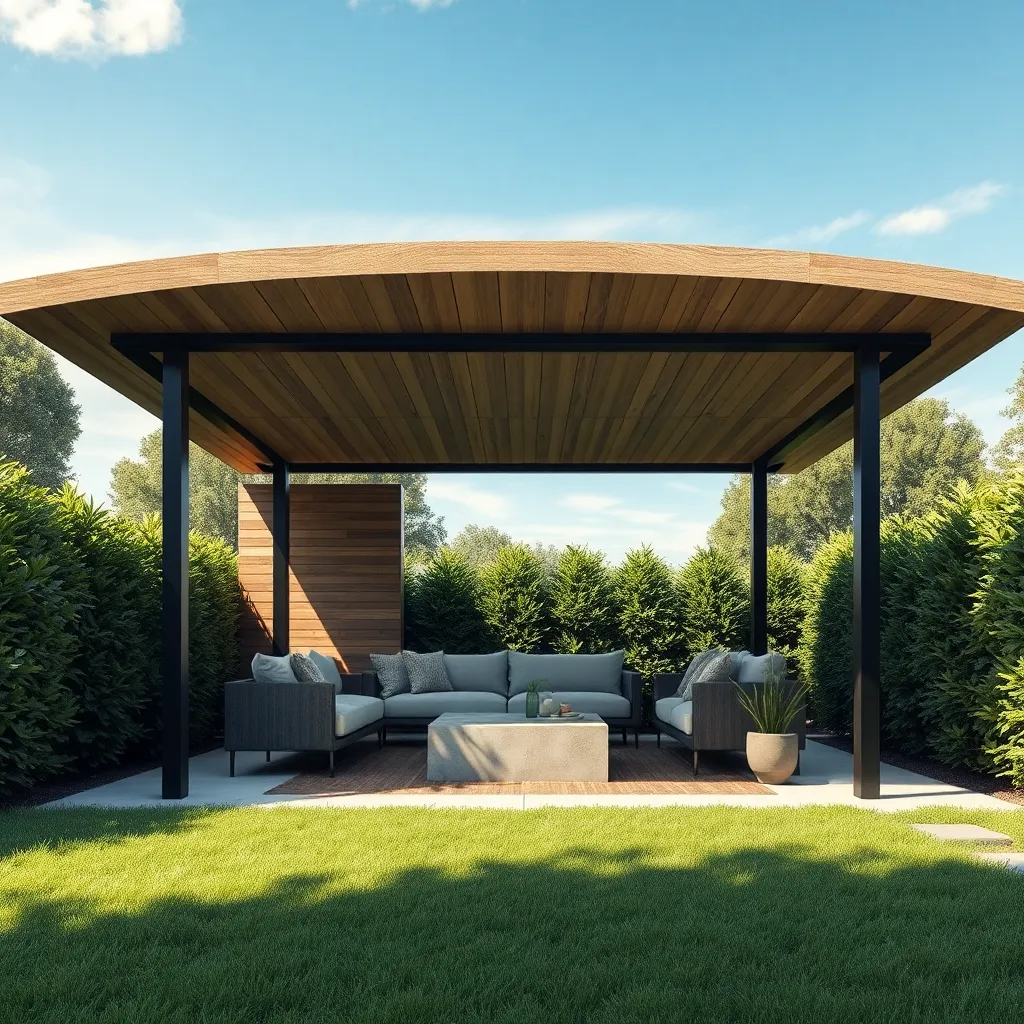
To create a sleek minimalist structure in your garden, focus on clean lines and simple forms. Opt for materials like aluminum or steel for the framework, which offer both durability and a contemporary look. Incorporate glass panels or tensioned fabric for roofing to maintain an open, airy feel. Beginners might start with a basic rectangular frame measuring about 10×12 feet, which can comfortably fit a small seating area.
Consider advanced design elements like integrated lighting and smart home features for a truly modern touch. Use LED strips along the framework for ambient lighting that highlights the structure’s form at night. For the flooring, polished concrete or natural stone tiles can enhance the minimalist aesthetic while providing a sturdy base. Remember to check local building codes and weather conditions when planning your structure to ensure it stands the test of time.
Utilize Sustainable Building Materials
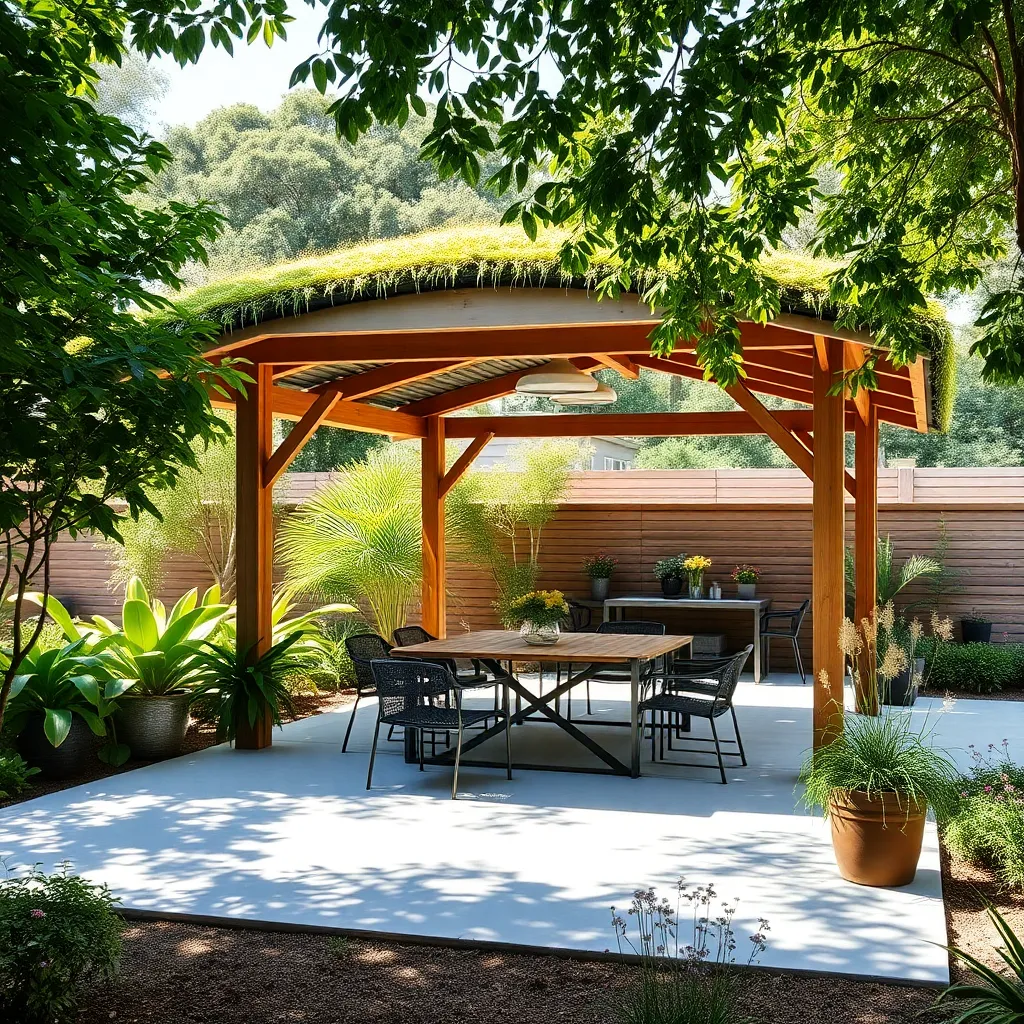
When designing a modern pavilion for your garden, choosing sustainable building materials can significantly reduce your environmental footprint. Consider using bamboo, a rapidly renewable resource known for its strength and flexibility, ideal for creating sleek, minimalist structures. For a more rustic appeal, reclaimed wood provides both character and sustainability, offering a unique blend of textures and tones that can complement any garden aesthetic.
For those wanting a more advanced touch, integrating solar panels into your pavilion’s design not only powers outdoor lighting but also contributes to energy efficiency. Opt for permeable paving materials like gravel or permeable concrete to enhance drainage and reduce water runoff around your structure. These choices not only bolster the environmental friendliness of your pavilion but also ensure its longevity and functionality, making your garden both stylish and sustainable.
Add Retractable Canopy Systems
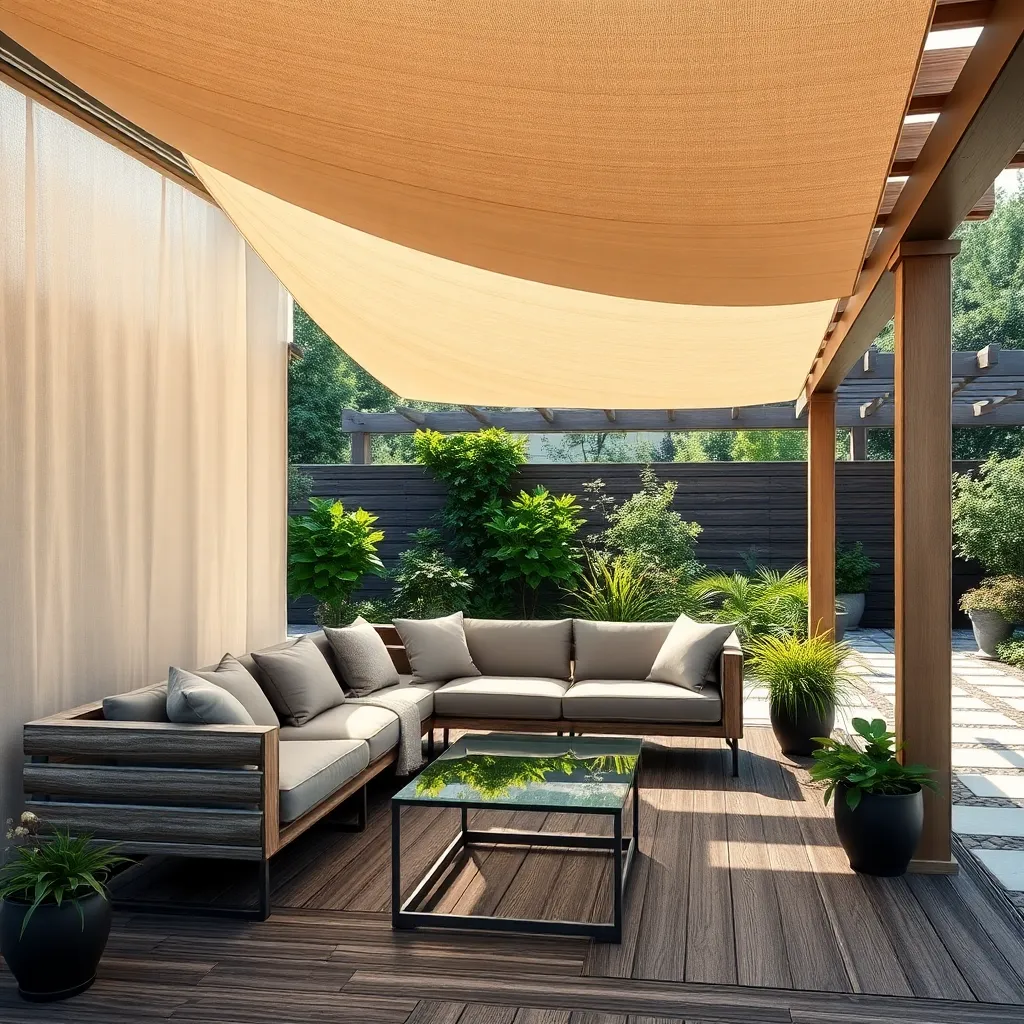
Incorporating a retractable canopy system into your garden pavilion is a flexible way to enjoy the outdoors, offering shade when you need it and an open sky when you don’t. These systems are available in a variety of materials, including durable canvas and weather-resistant acrylic fabrics, providing both aesthetic appeal and practicality. For beginners, opt for a simple, manual retractable canopy that can be easily adjusted with a pull cord or crank. This allows you to manage sunlight and shade with minimal effort, enhancing your garden’s usability throughout the day.
For those seeking a more advanced setup, consider motorized retractable canopies, which offer the convenience of remote control operation and can even be integrated with smart home systems. When planning your installation, ensure the canopy dimensions are proportionate to your pavilion structure, typically extending a few feet beyond the edges for optimal coverage. Using materials like aluminum or powder-coated steel for the frame provides longevity and resistance to rust, making your outdoor space both stylish and resilient. Additionally, consider adding side panels or screens to your canopy system to block wind and increase privacy, creating a versatile outdoor retreat.
Enhance Space with Vertical Gardens
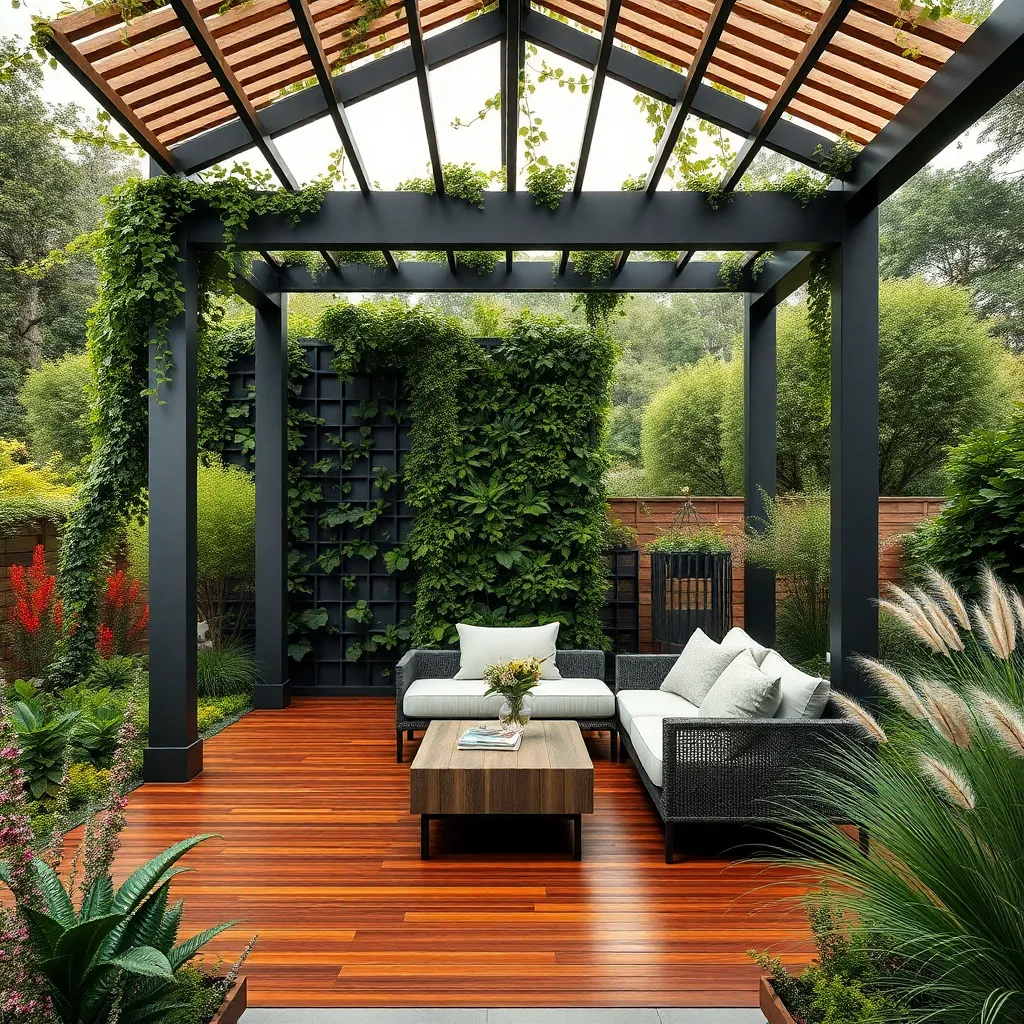
Vertical gardens are a brilliant way to maximize space and add a lush, green element to your garden pavilion. For beginners, consider using pre-made vertical garden panels that are easy to install against any wall or structure. These panels often come with built-in irrigation systems, making them low-maintenance. If you’re ready to take on a more advanced project, try a DIY approach using wooden pallets or metal grids. Simply attach pots or planting pockets to the framework, ensuring they are securely fastened and can support the weight of mature plants.
Choosing the right materials is crucial for a successful vertical garden. Opt for durable, weather-resistant materials like treated wood, stainless steel, or powder-coated metal to withstand the elements. Plants with shallow root systems such as ferns, succulents, and herbs are ideal for vertical gardens. To enhance your design, incorporate a variety of textures and colors to create visual interest.
- For a more sophisticated look, consider integrating a drip irrigation system to ensure even watering.
- Advanced gardeners might explore hydroponic systems, which allow for soil-less planting.
With these tips, you can transform your pavilion into a vibrant, living masterpiece.
Install Smart Lighting for Ambiance
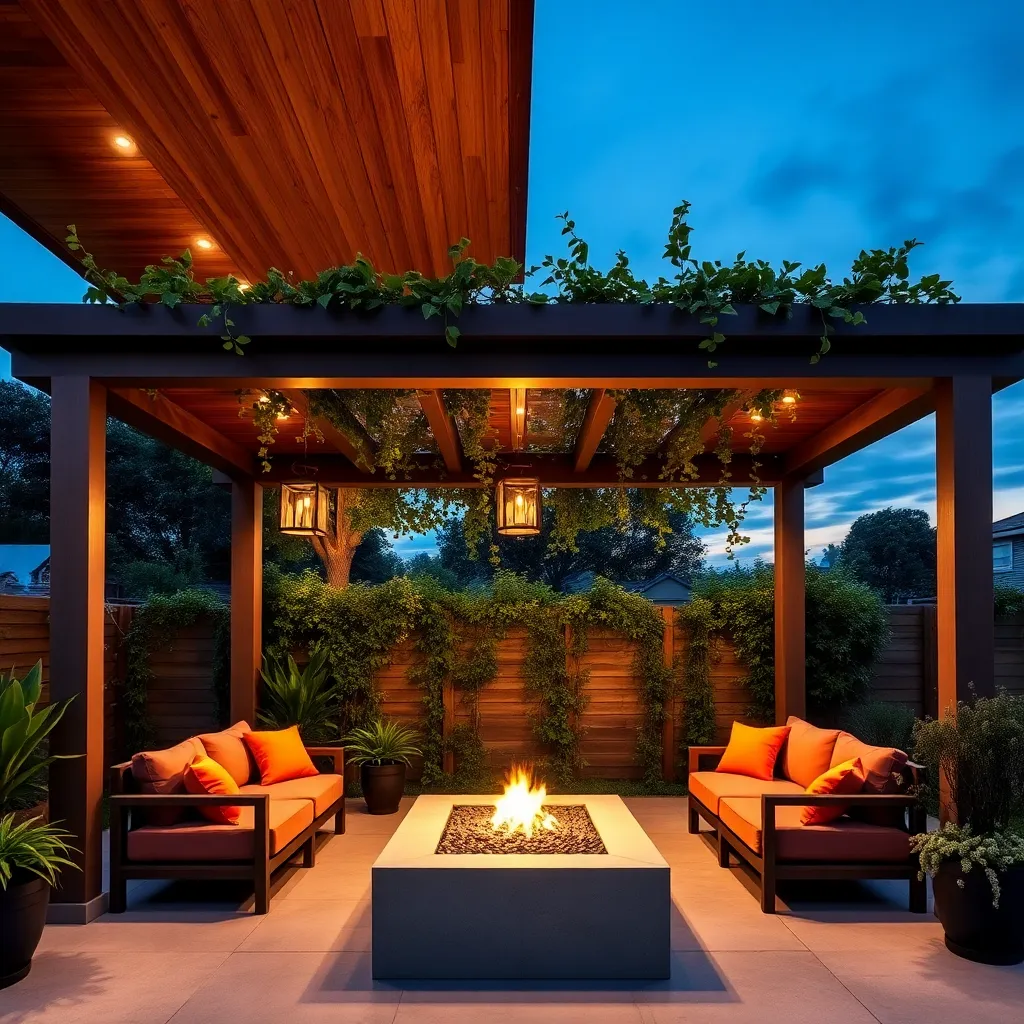
Adding smart lighting to your pavilion can transform your outdoor space into a cozy and inviting retreat. Begin with selecting weather-resistant fixtures that complement your pavilion’s design, such as sleek, modern sconces or understated pendant lights. For a beginner-friendly setup, consider smart LED bulbs that can be controlled with a smartphone app, allowing you to adjust brightness and color to fit the mood. This setup not only enhances the ambiance but also adds a layer of convenience and energy efficiency to your outdoor experience.
For those looking to elevate their lighting design, incorporate motion sensors and timers for a more automated experience. Position lights strategically around seating areas or pathways to create a warm glow that guides guests through your garden. To achieve professional-level effects, use a mix of uplighting to highlight architectural features of the pavilion and downlighting to create a soft, diffused glow. Remember to use outdoor-rated extension cords and secure all wiring safely to withstand the elements. With these thoughtful additions, your pavilion will become a stylish focal point that shines both day and night.
Conclusion: Creating Beautiful Outdoor Spaces
In wrapping up our exploration of ‘Modern Pavilion Ideas for Stylish Gardens,’ we journeyed through five key concepts that are not only about enhancing outdoor spaces but also nurturing the relationships that thrive within them. We started with design harmony, underscoring how a well-balanced pavilion can mirror the balance needed in healthy relationships. Next, we touched on personalization, reminding us of the importance of making spaces—and relationships—uniquely ours. We delved into functionality, highlighting how practical solutions can strengthen bonds by accommodating shared activities. Sustainability came next, encouraging us to build enduring relationships with the environment in mind. Lastly, we explored versatility, illustrating how adaptable spaces can mirror the flexibility crucial in thriving partnerships.
As a next step, why not choose one of these concepts and discuss with your partner how it can enhance both your garden and your relationship? This is the perfect opportunity to start a project together!
Remember, gardens grow best when tended to regularly—just like relationships. Save this article to revisit these ideas anytime you need a spark of inspiration. With thoughtful attention and creativity, your garden and relationship can flourish in harmony, promising a future full of joy and connection.
